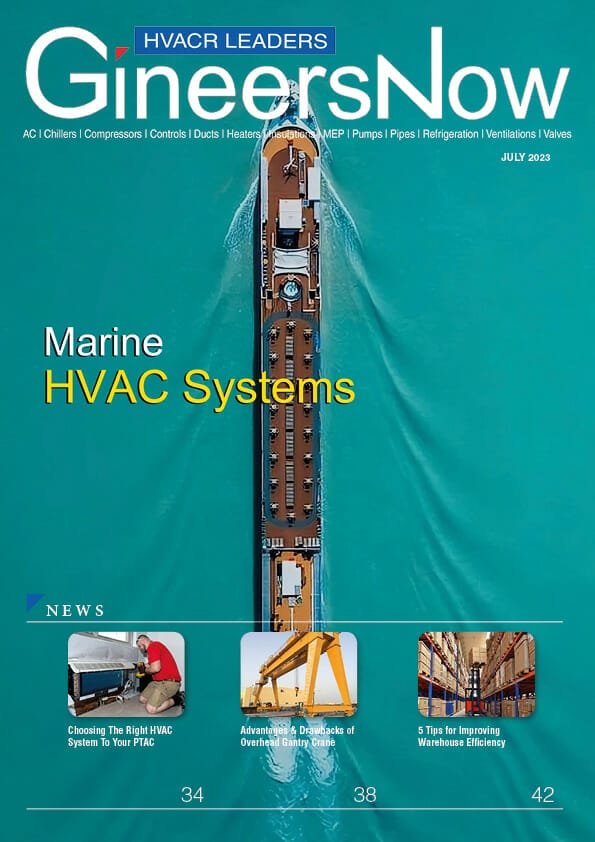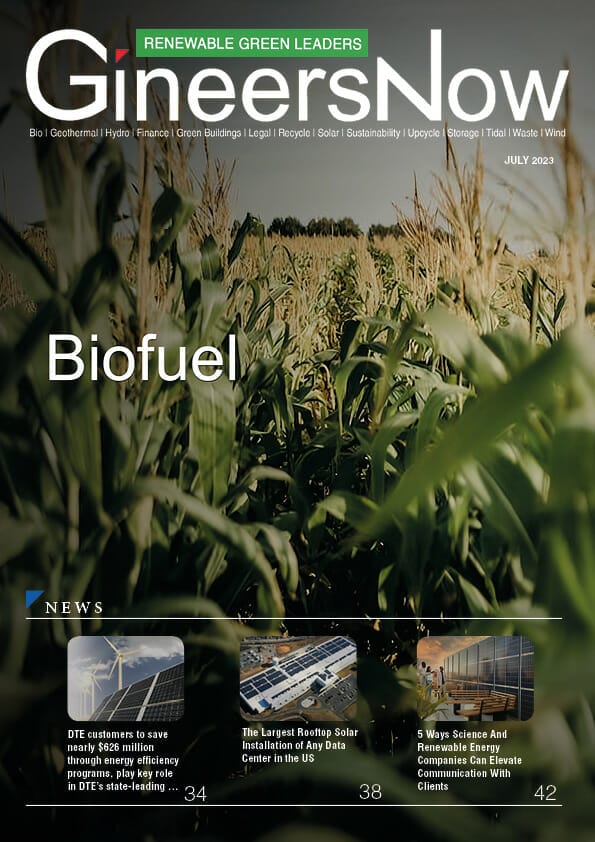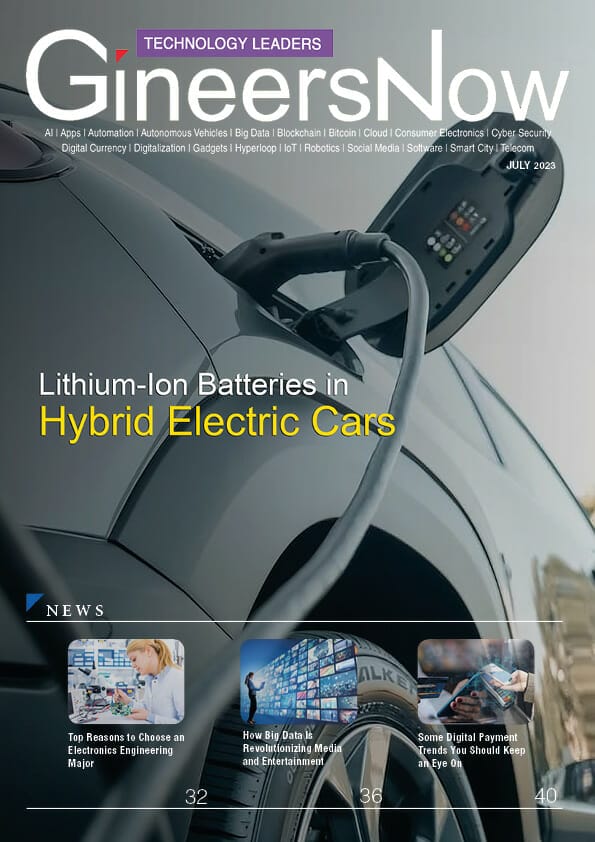Find out how renewable energy works and why it is better than non-renewable energy. Learn about the different types of renewable energy and how they work. Find out what countries use renewable energy the most and why it is so important. Read the article on what is renewable energy to find out more!
What is renewable energy? Renewable energy is energy that can be generated again and again without having to be destroyed. Sources of renewables can include solar, wind, water, geothermal, biomass, and hydroelectric power. Renewable energy has many benefits over traditional forms of energy, such as using less land and water resources, emitting fewer greenhouse gases into the atmosphere, and being reliable in times of crisis.
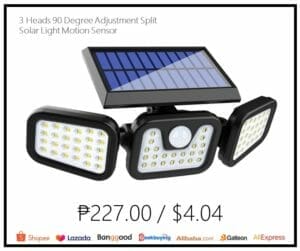
The history of renewable energy
Renewable energy has a long and complex history dating back to the dawn of civilization. In ancient times, people used wind and water power to create things like mills and water wheels. These technologies slowly faded away over time as people transitioned to more fuel-based methods of production.
But in the late 1800s, a new type of renewable energy emerged in the form of solar and hydropower. These technologies were initially used to generate small amounts of electricity for local use. Still, as they became more affordable and widespread, they began to play an increasingly large role in our society.
Today, renewable energy is widely considered one of the most important sources of clean energy on the planet. It has the potential to help us reduce our dependence on fossil fuels, protect our environment, and boost our economy overall.
Thanks to its potential benefits, renewable energy is quickly becoming one of the most popular types of technology out there!
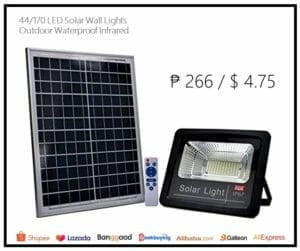
So what is renewable energy?
Renewable energy is energy that comes from natural resources that can be replenished, like sunlight, wind, water, and geothermal. Some renewable energy sources don’t require any new resources to be created – they just regenerate old ones. Solar panels, for example, use the sun’s energy to turn sunlight into electricity. Wind turbines use the wind to create power. And hydroelectric power uses waterfalls and rivers to turn kinetic energy into electrical power.
Renewable energy is important because it helps reduce the amount of carbon dioxide that’s released into the atmosphere. Carbon dioxide is a greenhouse gas that exacerbates climate change. By using more renewable energy, we can help mitigate climate change and save money in the long run.

Types of renewable energy
Renewable energy is energy that comes from natural resources like water, wind, solar, and geothermal. These are sources that can be used over and over again without depletion.
Solar and wind are the most common types of renewable energy because they can be used to generate electricity. Hydropower is another type of renewable energy that uses water to power turbines. Geothermal uses the earth’s heat to generate electricity.
The main drawback with these types of renewables is that they are not always available when we need them most (like during a power outage). This is what renewable energy is all about.
Solar energy advantages and disadvantages
Solar energy is one of the most popular renewable energy sources. It has many advantages over traditional energy sources, such as fossil fuels: solar panels can be placed anywhere, there is no need for fuel, no emissions, and solar power is dispatchable (able to be used when needed).
However, solar energy has some disadvantages as well: it is intermittent (not always available), expensive to install and maintain, and limited in how much power it can generate.
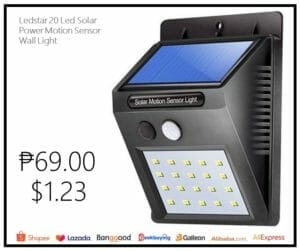
How does solar energy work?
Solar energy is the process of converting the sun’s rays into electrical energy. Solar panels use this energy to power devices in homes and businesses.
Solar energy is renewable because the sun will continue to provide light and heat for as long as the Earth remains in existence. What is renewable energy? It is all about using the sun as your source of energy.
Wind energy advantages and disadvantages
Wind energy is a renewable energy source that can be used to generate electricity.
The advantages of wind energy over other forms of energy include its ability to generate power at any time, its low emissions, and its cost-effective nature.
Disadvantages of wind power include the variability of the output and the need for infrastructure to support it.

How does wind energy work?
Wind energy is composed of the wind blowing over the earth’s surface. The air pressure and temperature changes create a flow of air that moves across the planet.
The wind turbines use this movement to turn a mechanical device that creates electricity. What is renewable energy? It is all about using wind to create energy.
Geothermal energy advantages and disadvantages
Geothermal energy is a form of renewable energy that comes from the heat of the earth. Geothermal resources are found beneath the Earth’s surface, in areas that have high amounts of volcanic activity. Geothermal energy has many advantages over other forms of renewable energy, such as solar and wind.
One advantage of geothermal energy is that it is sustainable. Unlike solar and wind, which rely on an intermittent source of power (the sun or wind), geothermal energy can be used all year long. This means that it can be used to power homes and businesses during the day, when there is sunlight, and to power them at night, when there is electricity demand.
Another advantage of geothermal energy is its relatively low cost. The upfront cost for installing a geothermal system may be higher than other renewable energy systems, but the long-term cost savings can make up for this expense. In addition, unlike solar and wind power, geothermal systems do not require batteries or backup generators in case of outages; they are always self-sustainable.
However, there are some disadvantages to using geothermal resources as a form of renewable energy: First, the earth’s heat is not always available. Second, geothermal energy is not always consistent, which can make it difficult to use for power generation. Finally, the resources required to extract geothermal energy can be expensive, making it a less desirable option for renewable energy projects in some cases.

How does geothermal energy work?
Geothermal energy is derived from the earth’s heat. This type of energy is collected from the earth’s core, which is about 2,000 miles below the surface. This heat is used to generate electricity and thermal energy.
Geothermal systems are usually composed of three parts: a well, a power station, and a heat exchanger. The well pumps water down to depths of up to 10,000 feet and then releases it back into the ground at high pressure. The power station uses this high-pressure water to turn turbines that create electricity. The heat exchanger transfers the heated water back up to the surface, where it can be used for heating or cooling buildings. What is renewable energy? It is all about utilizing geothermal to create energy.
Ocean energy advantages and disadvantages
There are many benefits to ocean energy, but there are also several disadvantages. One of the advantages is that it is renewable.
Another advantage is that it doesn’t have any emissions, which makes it a good option for environmentally-friendly power generation. However, ocean energy has some disadvantages as well.
One disadvantage is that it can be expensive to install and maintain, and another disadvantage is that there are not many areas where it can be used effectively.
How does ocean energy work?
Renewable energy is energy that can be generated from natural resources that do not damage the environment or human health, such as solar, wind, hydroelectric, and biomass. Renewable energy sources can help reduce greenhouse gas emissions and help alleviate global climate change.
Ocean energy works by converting the kinetic energy of waves into electricity. The power generated can be used to power homes, businesses, and transportation systems. What is renewable energy? It is all about using the ocean to produce energy.

What is biomass? advantages and disadvantages
Biomass is renewable energy that comes from plants. The advantages of biomass are that it is renewable and it doesn’t produce greenhouse gases.
The disadvantages of biomass are that it can be difficult to find a reliable source of biomass, and it can take a long time for the plant to produce energy. What is renewable energy? Renewable energy comes from natural resources, like sunlight, water, wind, and geothermal heat. These resources are always available to us, so we can use them over and over again.
How does biomass work?
Biomass is a renewable energy source that comes from plants. It can be used to produce heat, power, or transportation fuels.
Biomass is made up of mostly dead or dying plants. To make it work as a renewable energy source, biomass must be burned in an efficient and sustainable way. What is renewable energy? It is all about using plants to create energy.

Biodiesel advantages and disadvantages
Biodiesel is made from vegetable or animal oils, including recycled vegetable oil. It is a renewable fuel that can be used in diesel engines. Biodiesel has many advantages over traditional diesel: it has a lower emissions profile, it can be used in cold climates, and it produces less nitrogen oxides.
Some disadvantages of biodiesel include that it is more expensive than traditional diesel, and there is a limited supply. Renewable energy includes sources such as solar, wind, hydroelectricity, and geothermal power. These sources produce energy without releasing greenhouse gases into the atmosphere.
How does biodiesel work?
Biofuels are renewable energy sources that can come from a variety of sources such as crops, forestry and animal waste. The most common biofuel is gasoline made from biodiesel.
Biofuels work by using an organism to create a product that can be used in place of petroleum. What is renewable energy? It is all about using waste to produce energy.
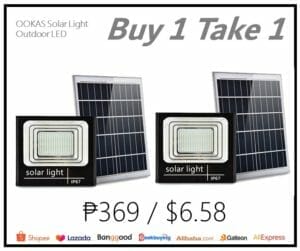
Other alternative energy sources
There are many alternative energy sources that can be used to produce electricity. Some of these sources include solar, wind, geothermal, tidal, and hydroelectric power. Each of these has its own advantages and disadvantages, so it is important to choose the right one for the specific situation.
Solar power is the most common alternative energy source in the world, but it requires a lot of sunlight to work well.
Wind turbines can be used to generate power from the wind, but they can also be noisy and difficult to install. Geothermal energy comes from the earth’s heat and can be used to produce electricity or heat.
Tidal power comes from waves moving alongshore and can be used as a source of electricity or water power.
Hydroelectric power comes from falling water and can be used to generate electricity or hydropower.

Tidal power advantages and disadvantages
There are a few key advantages and disadvantages of tidal power over other renewable energy sources.
Advantages include that tidal power is:
- Non-polluting
- Location-independent
- Lower cost than photovoltaics or solar thermal
Disadvantages include that tidal power is:
- Slow to develop commercially
- Limited in range
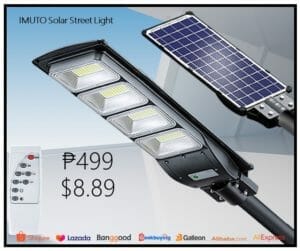
How does tidal power work?
Tidal power is a clean, renewable energy resource that harnesses the power of the tides. The tidal stream is a powerful current of water that flows in and out of the oceans.
When the tide reaches its highest point, it pushes against the oncoming waves, creating energy. This energy can be captured and used to power electric grids or turbines. What is renewable energy? It is all about utilizing kinetic energy to produce electricity.
Hydroelectric power advantages and disadvantages
Renewable energy is energy that comes from natural resources that can be regenerated or reproduced. This type of energy includes solar, hydroelectric, wind, and geothermal power. Hydroelectric power has many advantages and disadvantages over other forms of renewable energy.
Hydroelectric power is more reliable because it doesn’t rely on weather conditions or the sun’s rays. It also has a longer lifespan than solar and wind because it doesn’t require replacement parts as solar panels do. However, hydroelectric power is less accessible than other forms of renewable energy because it’s located in remote areas.

How does hydroelectric power work?
Hydroelectric power works by using the power of water moving through a turbine. The water is turned into kinetic energy by the turbine and then used to generate electricity. This type of power is renewable because it doesn’t use any fossil fuels, like coal or oil, to produce electricity.
Hydroelectric power is also environmentally friendly because it doesn’t produce greenhouse gases like carbon dioxide. What is renewable energy? It is all about using water to produce electricity.
Nuclear & uranium advantages and disadvantages
Renewable energy is energy that is not derived from fossil fuels, such as coal, oil, and gas. Renewable sources of energy can come from water power, wind power, solar power, geothermal power, biomass power, and small hydroelectric plants. Nuclear and uranium are two types of renewable sources of energy.
Nuclear energy comes from the nucleus of an atom that has been changed by radiation (such as uranium) into something else (like plutonium). Uranium can be used to create nuclear weapons or reactors to create electricity.
Nuclear energy has a number of advantages over other forms of energy. It is renewable, meaning it can be used again and again. It is also relatively clean, emitting little to no pollution.
However, nuclear energy has several disadvantages.
First, it is expensive to build and maintain.
Second, there is the risk of accidents that could cause significant damage to the environment or human populations.
Finally, nuclear power is not currently available on a large scale, and so it cannot meet the global demand for energy.

How do nuclear and uranium work?
Renewable energy refers to energy sources that can be regenerated or recreated. This means they are not dependent on finite resources, such as oil, coal, or water. Renewable energy sources available today include solar, wind, geothermal, hydroelectric power, and biomass.
Nuclear power is a renewable source of energy because it does not produce any greenhouse gases when producing electricity. Uranium is used in nuclear reactors to create heat and electricity. What is renewable energy? It is all about using nuclear to create electricity.
Hydrogen fuel cell advantages and disadvantages
Hydrogen fuel cells have a number of advantages and disadvantages when compared to other forms of renewable energy.
Advantages include that they produce no air pollution, they require no water or land to operate, and they have a very low running cost.
Disadvantages include that they are relatively new technology, and their efficiency at producing power is still lower than other forms of renewable energy. Overall, hydrogen fuel cells hold great potential as an environmentally-friendly alternative to traditional energy sources.
Renewable energy refers to energy sources that can be regenerated or renewed, such as solar, wind, hydroelectric and geothermal power. Hydrogen fuel cells are a form of renewable energy that uses the chemical energy of hydrogen to produce electricity. The cells use water as the electrolyte and produce no emissions. Hydrogen is abundant and clean-burning, so fuel cells could play an important role in future energy systems.

How does a hydrogen fuel cell work?
Hydrogen fuel cells are an emerging technology that uses hydrogen gas as a fuel source. The hydrogen gas is converted into electricity by a catalyst, and the electricity is used to power devices. Hydrogen fuel cells have the potential to be a clean energy source because they produce no emissions.
They also have the potential to be efficient energy sources because they can operate on small amounts of hydrogen gas. What is renewable energy? It is all about utilizing hydrogen fuel cells to create electricity.

Renewable energy examples and applications
Renewable energy is an umbrella term that refers to sources of energy that are not sourced from finite resources. These resources can be naturally occurring, such as sunlight and wind, or they can be created using technology, such as solar and wind power.
Renewable energy has the potential to help reduce greenhouse gas emissions and help meet global energy needs.

Renewable energy sources include:
Solar
Solar power is generated by using the sun’s energy to turn water or other substances into hydrogen and oxygen gas. This gas is then used to generate electricity.
Solar energy is an excellent source of renewable energy because it doesn’t require any fuel to operate, it’s environmentally friendly, and it doesn’t produce any waste products.
Wind
Wind power is generated when the wind picks up enough speed so that its pressure waves push against air molecules in a particular area.
This creates a mechanical force that can be converted into electricity.
Wind turbines use this force to spin blades which turn into a generator that produces electricity.
Geothermal
Geothermal uses heat from the earth’s core to create renewable energy. The heat from the earth’s core can be used in two ways: directly by heating water and turning it into steam or by using the heat to extract natural gas.
Renewable energy is an alternative source of energy that can help reduce greenhouse gas emissions and meet global energy needs. It comes from sources such as solar, wind, and geothermal.
What is renewable energy? It is all about utilizing natural resources that can be recycled or regenerated without the use of fossil fuels. Some common renewable energy sources are solar, wind, hydroelectric, and biomass. Renewable energy is growing rapidly in popularity because it is environmentally friendly and helps reduce carbon emissions.
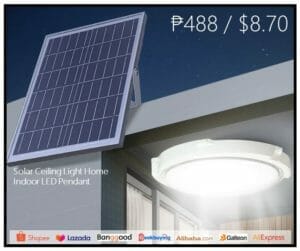
Benefits of renewable energy
The benefits of renewable energy are many and varied- from reducing our dependence on foreign oil, to creating jobs in the renewable energy sector, to helping the environment.
Renewable energy benefits include:
1. Environmental sustainability
Renewable energy is environmentally friendly because it does not produce emissions that damage the environment.
2. Economic viability
Renewable energy is more cost-effective than traditional sources of energy, like coal and oil, because it doesn’t require large investments in infrastructure or production costs.
3. Eradication of fossil fuel dependency
Renewable energy can help us to completely eradicate our dependence on fossil fuels, which is a major environmental and economic issue.
4. Global warming mitigation
Renewable energy can help to slow down or reverse the effects of global warming.
5. Energy independence
By using renewable energy, we can become more self-sufficient in terms of energy supplies, reducing our reliance on other countries for this essential resource.

What is renewable energy technology?
Renewable energy technology is the use of natural resources to generate electricity or heat, which does not deplete over time. Renewable energy sources can be classified as either primary or secondary. Primary renewables include solar, wind, water, and geothermal power. Secondary renewables include biofuels, hydropower and biomass.
Primary renewable sources are often considered more reliable because they are consistent and can be deployed in larger amounts than secondary renewables. Solar power is an excellent example of a primary renewable source that is increasingly being used to generate electricity due to its reliability and low cost. Wind power also has a growing presence in the market due to its reliability and ability to provide electricity when demand is high.
However, both solar and wind power have limitations that must be taken into account when planning for grid operations. For example, solar panels cannot generate electricity at night or during bad weather conditions, while wind turbines can only produce power when the wind is blowing.
Secondary renewable sources are becoming more popular because they address some of the limitations of primary renewables. Biofuels are an excellent example of a secondary renewable source that has the potential to reduce greenhouse gas emissions while providing fuel for vehicles.

What is renewable energy engineering?
Renewable energy is any energy source that can be recovered at a rate that does not deplete the resource.
This can include solar, wind, hydroelectric, geothermal, ocean currents, and biomass.
Renewable energy sources have been proven to be environmentally sustainable in the long run as they do not produce greenhouse gases or lead to the depletion of finite resources.
Renewable energy development
Renewable energy is increasingly important as an option for the future because of its many benefits. Renewable energy sources do not produce emissions that contribute to climate change, they are reliable and consistent, and they are often located geographically near population centers.?
Renewable energy technologies vary in their potential to replace traditional power sources, but all have at least one common goal: creating electricity from natural resources like watermelons or wind. Solar and wind power are the most common forms of renewable energy. Solar uses sunlight to create electricity, while wind turbines use the wind to turn gears that generate electricity.

Other renewable energy technologies include biomass (such as burning wood), geothermal (heat from the earth), ocean waves, solar thermal (using the sun’s heat to create steam and produce electricity), and hydroelectric power (the movement of water through turbines to produce electricity).
Renewable energies come in a variety of forms, depending on their specific source. Some renewables can be used right away, such as solar panels that convert sunlight into electrical energy, while others may take a bit longer to mature, such as wind turbines. Renewables have many benefits over traditional sources of power: they’re environmentally friendly because they don’t produce pollution, they’re cheaper to operate than traditional power sources, and they have a great potential to replace traditional sources of power in the future.
Many renewable resources are available all over the world, and they can provide a reliable and sustainable source of power for years to come.
Effectiveness of renewable energy
Renewable energy sources can be used to power homes and businesses and have the potential to reduce greenhouse gas emissions. However, there are some limitations to the effectiveness of renewable energy sources. For example, wind and solar power can only be used when the weather is favorable and there is enough sunlight or wind available. Additionally, renewable energy sources are not always reliable or affordable.
Renewable energy is energy that comes from natural resources that can be replenished, such as water, wind, solar, and biomass. Renewable energy has the potential to reduce electricity sector emissions by around 80%. It can also provide a more stable source of electricity than traditional sources like coal and gas.
Renewables are already playing a role in powering homes and businesses across the globe. They are becoming more important as we work to reduce our reliance on fossil fuels.

The best type of renewable energy
Renewable energy is energy generated from sources that can be regenerated or restored many times, such as solar, wind, tidal and thermal. Renewable energy has the potential to replace fossil fuels and provide long-term solutions to climate change. Different types of renewable energy have different strengths and weaknesses, but they all have the ability to provide clean, sustainable power.
Solar energy is one of the most common types of renewable energy. Solar panels use sunlight to convert electrons into electricity. This electricity can then be used to power things like lights or computers. Solar panels are usually easy to install and can be used in a variety of locations, including homes and businesses.
Wind power is another popular type of renewable energy. Wind turbines use the wind to turn gears that create electricity. Wind farms are large areas where many wind turbines are placed close together. Wind turbines can be located on land or at sea.
Tidal power is another type of renewable energy that has been gaining popularity recently. Tide mills use the movement of ocean tides to turn blades that create electricity. The amount of tidal power available varies depending on the time of year because the tides are strongest during certain times of the day.
Geothermal energy is a type of renewable energy that comes from the Earth’s heat. Geothermal plants use water and steam to turn turbines that create electricity. The heat in the Earth can be used to create electricity, or it can be used to power things like heaters or air conditioning.
There are many different types of renewable energy, but all of them have the same goal: to provide clean, sustainable power.

Renewable energy’s most common usage and applications
Renewable energy is used the most in developing countries because they have less access to traditional energy resources, such as oil and gas. These countries need to use renewable energy sources to help them decrease their reliance on foreign oil and gas.
Renewable power can also be used in developed countries. Still, it is becoming more popular in these countries because they are concerned about the environment and want to reduce their carbon footprint. Renewable energy can come from solar, wind, geothermal, hydroelectric or tidal power.
Renewable electricity is used the most domestically in the United States. Over 30% of renewable energy comes from biomass, which includes wood, agricultural waste, and residues. The second largest category is hydropower, which comes from falling water. Renewable energy accounts for about 20% of global electricity consumption.

Can we replace fossil fuels with 100% renewable energy?
Renewable sources of energy have been touted as environmentally friendly replacements for fossil fuels such as gasoline and oil.
Despite their environmental benefits, renewable energy sources have certain limitations. For example, solar and wind power are intermittent – they produce power only when the sun or wind is shining or blowing. This makes these sources unsuitable for use in large-scale applications like electricity generation.
In addition, renewable resources are not always available at a price that is affordable enough to replace fossil fuels globally. Despite these challenges, many experts believe that renewable energy can play an important role in reducing greenhouse gas emissions and improving global climate stability.
While renewable energy currently produces only a small fraction of global energy consumption, it is growing rapidly and has the potential to provide a significant amount of clean energy in the future. Continued innovation is needed to make renewable energy more affordable and efficient, but it has the potential to play an important role in replacing fossil fuels.

What is “clean energy”?
Clean energy is energy that does not produce greenhouse gas emissions. There are many different types of clean energy, each with its own advantages and disadvantages.
Some of the most popular clean energy sources include solar, wind, hydroelectric, and biomass.
Solar power is the most popular form of clean energy because it is reliable and affordable.
Wind power is a less common but increasingly popular form of clean energy because it is environmentally friendly and produces low emissions.
Hydroelectric power is another environmentally friendly option that can be used to produce electricity.
Biomass is a renewable resource that can be used to create heat or electricity. It has the potential to become an important source of clean energy in the future because it has low emissions and can be used in places where other forms of clean energy are not available.

What is “green energy”?
Green energy is energy that comes from natural sources that can be replenished, such as water, wind, solar and geothermal.
Renewable energy is becoming an important part of the energy mix because it is environmentally friendly. It does not produce greenhouse gases like traditional forms of energy do, and it helps to reduce our dependence on foreign oil.

Conclusion: What is renewable energy?
Renewable energy is energy that can be regenerated or reused over and over again. This includes solar, wind, hydro, and other forms of renewable energy. Solar and wind are the most common types of renewable energy because they produce power without causing pollution. Hydroelectricity is another type of renewable energy that uses water to produce electricity. Renewable energy is important because it helps reduce our reliance on fossil fuels, which can be harmful to the environment. In this article, we have discussed what renewable energy is, the latest trends in renewables, its benefits, and the different types that are available.
Click below to read the magazine for free
Click here to download the magazine
Click here to read on Yumpu







